
|
|
The Evrika (Eureka) engines
The name is rendered both in the instruction leaflet and on the engines themselves in Russian Cryllic script as ЭBPИKA. My Thankfully, the need to debate this point is rendered moot by the general use of the name Eureka in the relatively few English-language commentaries dealing with this range. I’ll happily stick with that convention from here on in!
The best competition engines designed and constructed by Ukrainian artisans such as twice World Team Race Champion Boris Krasnoroutski of Kiev were second to none in terms of quality, innovation and performance. The Eureka range continued this proud tradition, which has since been upheld by a number of well-known Ukrainian manufacturers, including Profi, Alexandr Matusha (Parra, Redfin) and Fora, among others. The superb replica racing engines formerly marketed by the late Woody Bartelt were also produced in Ukraine.
The various Eureka models were all based upon the same very up-to-the-minute Schnuerle-ported 2.5 cc twin ball-race diesel power unit. This basic powerplant featured an ingenious modular construction, allowing the same crankcase, cylinder casting, ABC piston/cylinder setup and working components to be used as the basis for three distinct models - rear exhaust aero, side exhaust aero and tether car twin-shaft. The construction allowed the exhaust to be positioned on either side or at the rear. The accompanying image of the crankcase interior below at the right should clarify the way in which the main casting was configured to allow this to happen.
The rear drum valve model was clearly intended for control line team race applications in the F2C category. The revised front housing used with this model featured a pair of extra mounting lugs to improve the security of the mounting and minimize any vibration losses. The instructions provided were entirely appropriate as far as they went, but fell well short of providing sufficient guidance on diesel operation for an owner new to this technology. The makers evidently assumed (perhaps not unreasonably) that anyone buying this engine would have some experience under their belt. This is definitely not a beginner's engine!
The production of a glow-plug version of the engine was also planned, but relatively few (if any) seem to have been made before production ceased. A few owner-converted glow-plug models do exist, however. The conversion was a very simple matter of replacing the diesel's contra-piston sleeve with a matching head button tapped for the installation of a glow-plug. A very straightforward task for anyone with access to a lathe. The fact that the vast majority of these engines appear to have been constructed as diesels deserves an attempt at an explanation. Although diesels remained in general use for team race applications as of 1988, the majority of active competition modellers had switched to glow-plug ignition for almost all other purposes. This included the F2D control-line combat category for which the FRV version of the Eureka aero model was primarily intended. However, the use of methanol-based fuels in events involving young people was forbidden in the USSR at this time, presumably due to fears regarding substance abuse. This may explain why so many Soviet glow-plug engines also appeared in diesel format and why so many high-performance general-purpose diesels were developed by the likes of ZSTKAM and Granit, deep into the period of the worldwide glow-plug high-performance takeover.
The manufacturers claimed a design operating speed range of 20,000 - 23,000 RPM with a peak output of 0.38 Kw (0.510 BHP). This level of performance is generally quite comparable to that of contemporary commercially available un-piped 2.5 cc glow-plug motors running on FAI fuel - a commendable achievement by the designers if the claim is valid. Given the rarity of unrun new-in-package examples of these engines, I've elected to leave my own illustrated unit un-tested, but I have to say that much of the claimed performance undeniably seems to be there in the design.
The instruction manual provided a most interesting range of suggested fuel mixtures. A kerosene content of 45% was recommended in all cases, with the ether content ranging from 31% to 35%. Recommended oil contents ranged from 20% to 24%, with a variety of different lubricant blends being specified. All of these lubricant mixes included at least 8% castor oil. It's particularly interesting to note that none of the above recommended fuel formulae included the addition of any additives such as a cetane booster. Evidently the engine was supplied set up for operation on an un-doped fuel. It's possible that this reflected a supply shortage of such substances in the USSR at the time.
A twin-shaft version of the FRV variant was also produced for tether car models. This offering incorporated a driven second shaft in place of the bolt-on molded plastic backplate featured on all FRV aero variants. The wheels were mounted directly on the twin shafts. Because no new main crankcase casing was produced for tether car applications, the car engine had to be mounted using the standard None of the engines appear to have borne serial numbers. The cast-on inscription on the crankcases of all versions read "ЭBPИKA-2,5" as illustrated earlier, but the car versions also bore the additional designation "TEMП" (TEMP) – a tribute to the earlier 2.5 cc TEMP-1 diesels which had been produced in Ukraine during the mid-1960’s for tether car use, a branch of the hobby which was then being promoted quite strongly by DOSAAF. Those engines had been very capable performers in tether car service The Eureka engines displayed a high standard of workmanship, particularly where it counted. All fits and working finishes in my example are beyond reproach, although the castings are a little rough in spots, with a few visible flaws. Reportedly the engines started easily and delivered the promised high levels of performance. Despite this, they were produced in relatively small numbers. The absence of serial numbers makes it impossible to arrive at an estimate of actual production figures, but very few of those that were manufactured seem to have found their way beyond their zone of origin. Good examples in original unmodified condition are quite rare today outside Ukraine. Even there, such examples are apparently far from common. Still, these engines allowed the former USSR to go out on a high note when it came to model engine design and production. The Eureka was undoubtedly among the best-performing 2.5 cc production diesels ever developed anywhere. Under other circumstances, the engine would probably have achieved a far higher level of recognition than it actually did. A classic case of poor timing, but nonetheless a marque well worthy of remembrance! __________________________ Article © Adrian C. Duncan, Coquitlam, British Columbia, Canada First published April 2025 |
| |
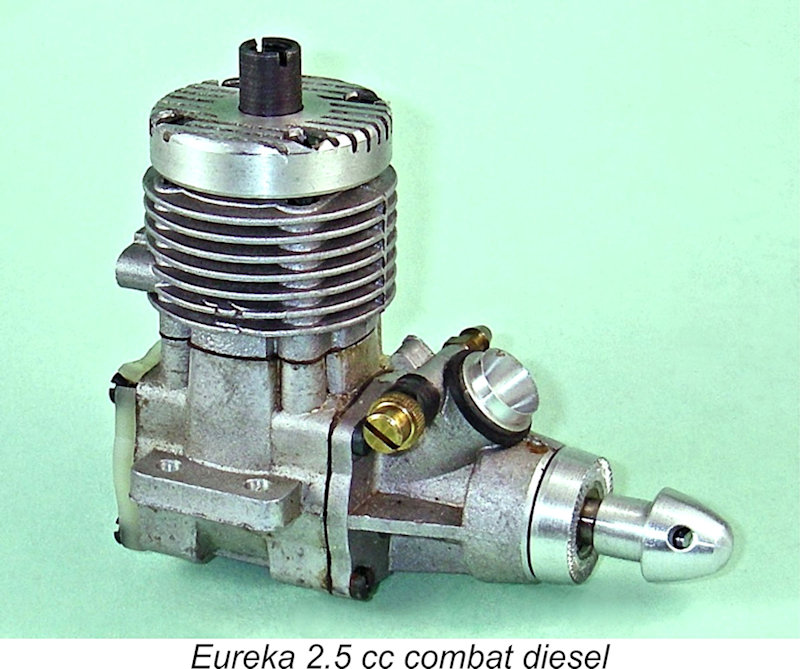 In this necessarily brief article, I’ll share what little information I've been able to dig up on one of the lesser-known model engine marques to originate in the former Soviet Union. I’ll be discussing the Evrika (Russ. ЭBPИKA) engines which were introduced in Ukraine in around 1988, immediately prior to the 1991 break-up of the former USSR and the establishment of
In this necessarily brief article, I’ll share what little information I've been able to dig up on one of the lesser-known model engine marques to originate in the former Soviet Union. I’ll be discussing the Evrika (Russ. ЭBPИKA) engines which were introduced in Ukraine in around 1988, immediately prior to the 1991 break-up of the former USSR and the establishment of 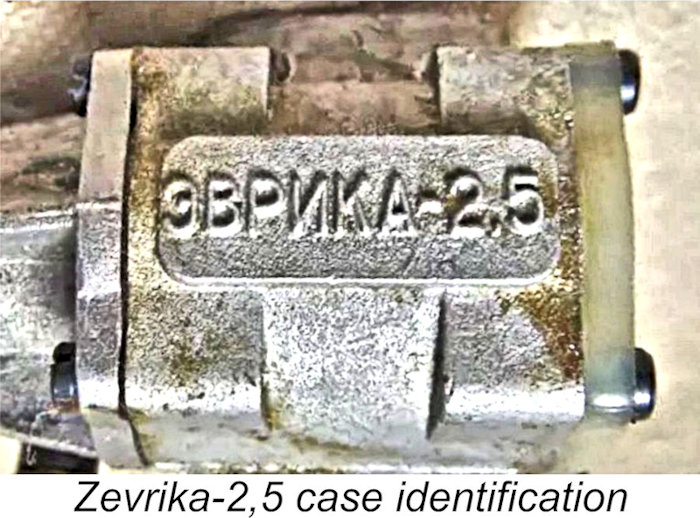
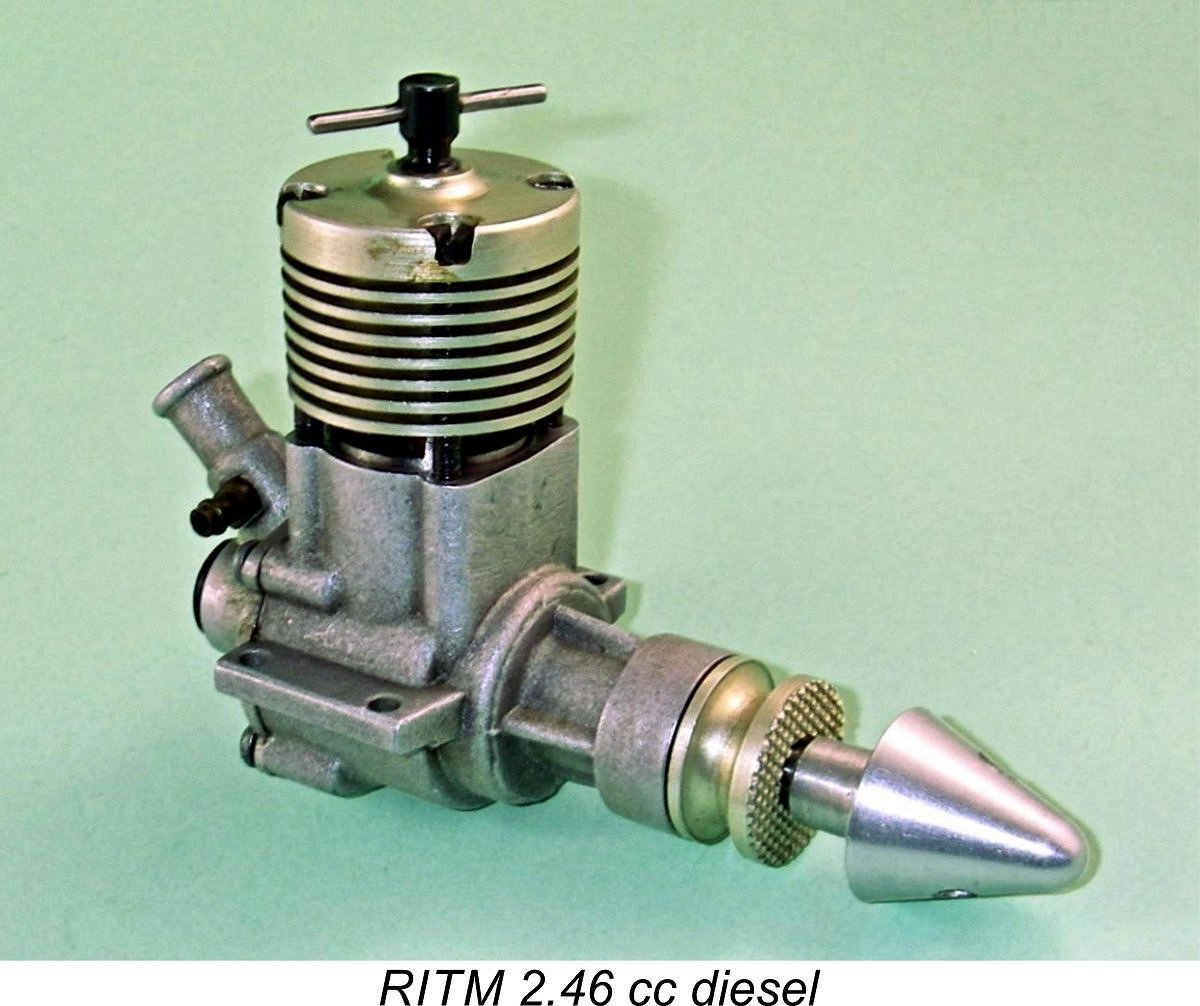
 The Eureka engines were manufactured during the late 1980’s and early 1990’s in
The Eureka engines were manufactured during the late 1980’s and early 1990’s in 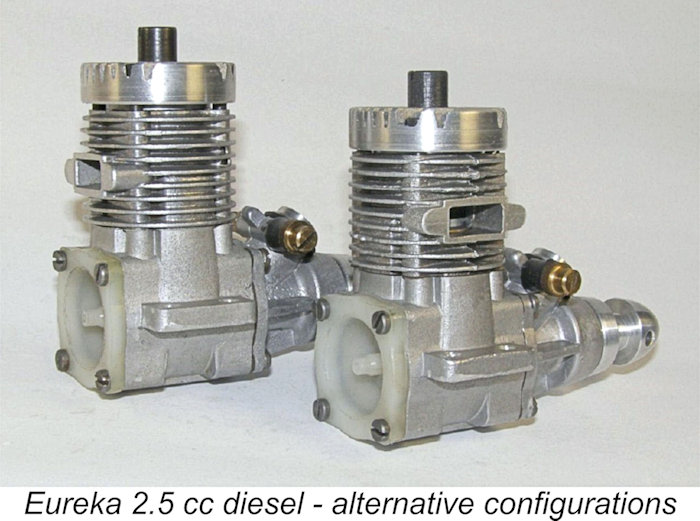
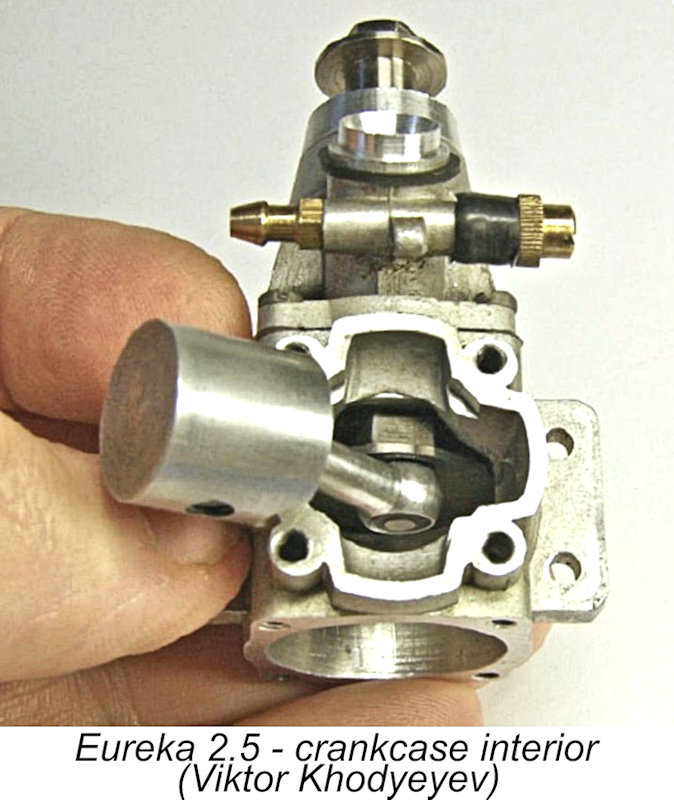
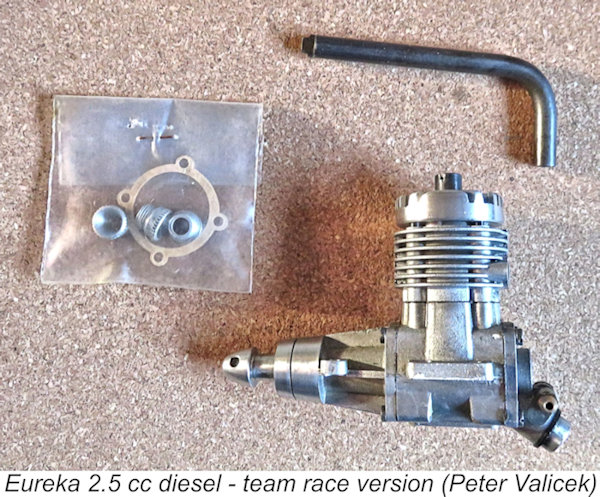 An interesting comment in the leaflet was the specific claim that the engine was good for at least 5 hours of operation at full power. Indeed, the warranty statement read (in Russian): "If the engine is used as intended, the manufacturer guarantees proper operation for 5 hours, subject to observance of the rules for starting, maintenance and storage". This begs the question of how any claimant under this warranty was supposed to prove the observance of those rules or to show that the engine had not reached the 5-hour limit! It also failed to specify the manufacturer's obligations in the event of a successful warranty claim.
An interesting comment in the leaflet was the specific claim that the engine was good for at least 5 hours of operation at full power. Indeed, the warranty statement read (in Russian): "If the engine is used as intended, the manufacturer guarantees proper operation for 5 hours, subject to observance of the rules for starting, maintenance and storage". This begs the question of how any claimant under this warranty was supposed to prove the observance of those rules or to show that the engine had not reached the 5-hour limit! It also failed to specify the manufacturer's obligations in the event of a successful warranty claim.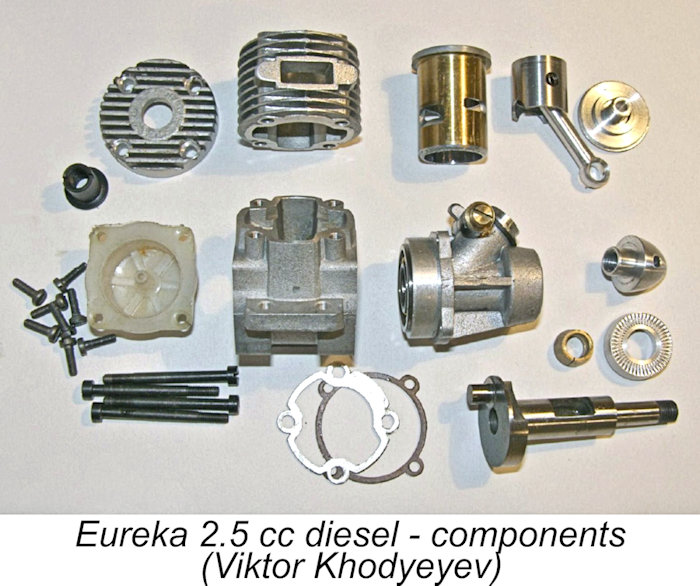
 As stated by the manufacturer in the instruction leaflet, the Eureka 2.5 cc FRV diesel was intended primarily for use in F2D control-line combat models. My illustrated rear-exhaust example is one of these units. However, the engine was also made available in side-exhaust format for use in other applications. The engines of all types were supplied in re-sealable bubble packs complete with a compression adjusting tool, a set of spare gaskets and a comprehensive Russian-language instruction manual. The FRV variant also came with a spare molded plastic backplate.
As stated by the manufacturer in the instruction leaflet, the Eureka 2.5 cc FRV diesel was intended primarily for use in F2D control-line combat models. My illustrated rear-exhaust example is one of these units. However, the engine was also made available in side-exhaust format for use in other applications. The engines of all types were supplied in re-sealable bubble packs complete with a compression adjusting tool, a set of spare gaskets and a comprehensive Russian-language instruction manual. The FRV variant also came with a spare molded plastic backplate. 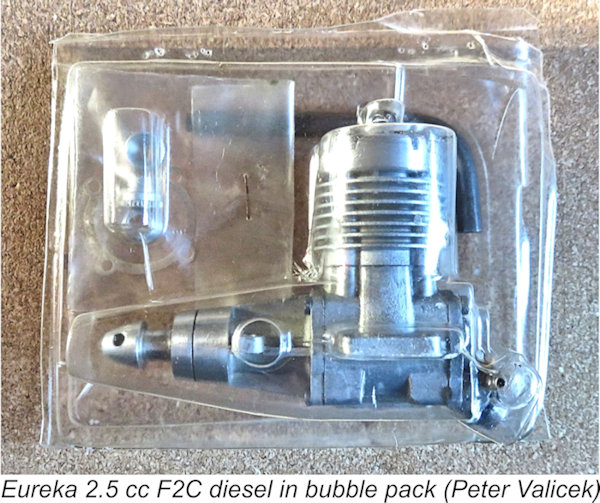
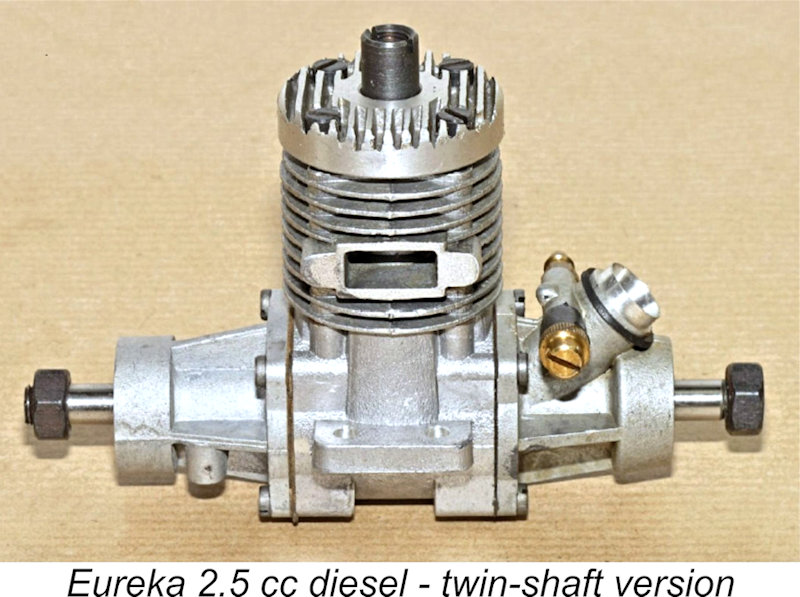
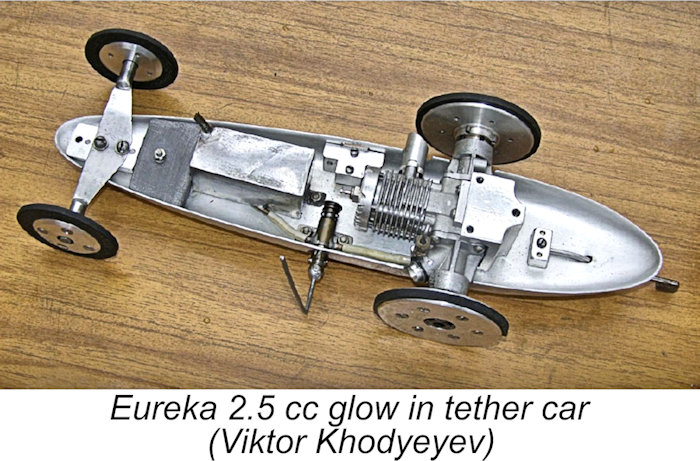 aero mounting lugs and holes, which was not as convenient as the earlier TEMP or Oliver types with their flat mounting bases for tethered car use. A special mounting block had to be used, as seen in the accompanying image of a glow-plug conversion installed in a car chassis.
aero mounting lugs and holes, which was not as convenient as the earlier TEMP or Oliver types with their flat mounting bases for tethered car use. A special mounting block had to be used, as seen in the accompanying image of a glow-plug conversion installed in a car chassis.